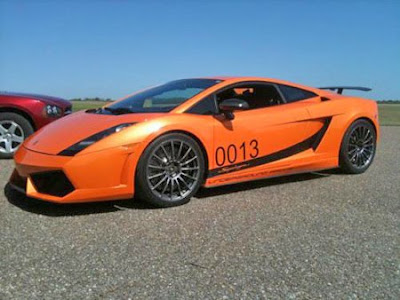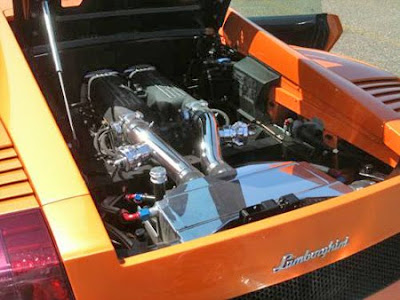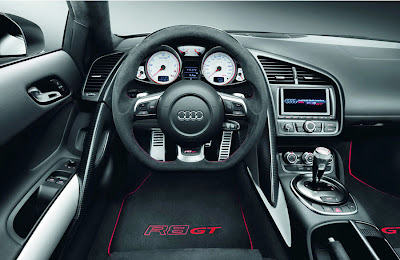Friday, May 7, 2010
2010 Mitsubishi Outlander Launched in India at Price Rs. 19.95 lacs
0 comments Posted by veeant vZ at 11:23 PMHM-Mitsubishi Motors, one of India’s leading auto manufacturers, unveiled the Outlander 2010 for the India market, today. The much-awaited Outlander 2010 is a comfortable, high-performance car, which lends itself to business purposes, as well as leisure driving. The new Outlander was unveiled by Mr. Vijay Kumar, Executive Vice President and SBU Head – Chennai Car Plant, Hindustan Motors Ltd. in presence of Mr. Rohit Bal, one of India’s leading fashion designers and other senior company officials. Speaking at the unveil of the Outlander 2010, Mr. Y.V.S Vijay Kumar, said, “The all new Outlander is the outcome of all the feedback we received from our customers over the past one year and it delivers on all counts. With its stylish looks, great performance, plush interiors, innovative features and above all value for money price I am sure it will be as successful in the Indian market as it is worldwide for Mitsubishi. This car can perfectly satisfy the needs our target customers who want a lifestyle vehicle which can also be a fashion statement. We are supporting this great product with aggressive marketing campaign. The timing seems to be perfect this time with the auto market doing great and customer interest for a premium SUV also at a high.”
Speaking at the unveil of the Outlander 2010, Mr. Y.V.S Vijay Kumar, said, “The all new Outlander is the outcome of all the feedback we received from our customers over the past one year and it delivers on all counts. With its stylish looks, great performance, plush interiors, innovative features and above all value for money price I am sure it will be as successful in the Indian market as it is worldwide for Mitsubishi. This car can perfectly satisfy the needs our target customers who want a lifestyle vehicle which can also be a fashion statement. We are supporting this great product with aggressive marketing campaign. The timing seems to be perfect this time with the auto market doing great and customer interest for a premium SUV also at a high.”
Equipped with a BS-IV compliant 2.4 MIVEC engine, some of the key enhancements in the Outlander 2010 include the jet-fighter front grill, bulged rear bumper, silver-color roof rails and HID Head Lamp with AFS function.
The All Wheel Control system in the Outlander provides for the wheels to be powered individually, which ensures superior handling in all driving conditions. A centrally located dial system, located on the center console, permits free switching between 3 drive modes (2WD, 4WD Auto and 4WD Locked), depending on the driving conditions and the environment. The Anti-lock braking System (ABS) helps prevent wheel lock and maintenance of steer control, while the Electronic Brake-force Distribution (EBD) evenly distributes braking force to the rear wheels, adding to overall safety.
The Outlander 2010 is further enhanced with a theft protection device, alloy brakes and clutch control.
The refurbished beige leather interiors enhance the stylishness of the vehicle, along with warm and cool upper glove box, leather-wrapped door trims and instrument panels, the AC control panel knob with chrome ring and high-contract meter combination. The Outlander 2010 is also equipped with technologically advanced 650W Premium Rockford Fosgate sound systems, with 9 speakers in 7 positions.
The Outlander’s lifestyle quotient is further enhanced with other features like a new Adaptive Front Lighting System, a new grille with chrome accents, new front bumpers, redesigned front fenders, mirror mounted turn indicators, new door and dash trims, USB port, AUX-IN port, aluminum pedals, leather covered instrument panel, roof rails, new combination meter and auto-folding Outside Rear View Mirrors.
The Outlander 2010 is priced at Rs. 19.95 lacs, (ex-showroom), all-India, and is available in an exciting range of new colors, including Catwalk Silver, Haute Red, Chic Black, Cool Aqua Metallic, Vogue White, Shimmering Ash, Runway Grey, Primavera Purple and Glitterati Green.
The unveil of the vehicle was followed by the launch of Rohit Bal’s Outlander Signature Collection, including a stunning new line of garments that reflect the spirit of the Outlander 2010. The unveil of the vehicle was followed by the launch of Rohit Bal’s Outlander Signature Collection. Comprising of a stunning new line that embodies power, grace and elegance, the collection reflects the spirit of the Outlander 2010. The sharp and slick look of the new line also underscores the perfect blend of luxury and style that the vehicle symbolises.
HM-Mitsubishi currently sells the Pajero, the Montero, the Lancer, the Cedia and the Outlander in the Indian market through 40 dealerships, across India.
Source: HM-Mitsubishi India
Labels: Mitsubishi Cars India
Thursday, May 6, 2010

In the world demand on Six-door sedans is so high that each decade such cars are made. Buyers of such cars more often hotels for transportation of especially important clients and representatives of official delegations. New working out in this class was presented by German firm Binz, the main expert in the world of manufacture special transport on the basis of Mercedeses: ambulances, ritual cars and police versions.
In former years experts of this company stretched also a S-class, and the E-class of the previous generation. Henceforth the scale of versions will be made only by six-door E-classes of new generation. Why the largest German sedan not undertakes in a basis ? Private buyers of limousines, of course, prefer flagman models, and here for hotels, apparently, the model of the business class which has increased at length almost to six metres (it is more Maybach 57!), the price/prestige, rather than much more expensive S-class possesses the best parity.

Unlike the majority of manufacturers of the limousines creating in interior atmosphere of night club with a son of lumiere, bars and telescreens, masters of exclusive tuning from firm Binz pursue the opposite aim. Their extended sedan inside does not differ from serial Mercedes on style of registration. The upholstery of an additional row seats and the complete set of doors are taken from the regular version. An average number is offered in three executions: or the continuous sofa which passengers sit in the direction of travel, or two separate armchairs, developed faced to a back row, or the same seats looking forward.
The strange version most, perhaps, is called Individual. In this limousine only four places, engaging lobbies. Between front and rear numbers – the big distance. If for feet it is possible to recognise record space as plus the superfluous complete set of doors, turns out, to what.

Hardly probable to name any limousines dynamical cars, but models Binz here – an exception. Certainly the additional insert which has extended a body more than on metre, and also seats and doors have made the car more hard on 305 kg. Nevertheless "the five-100-th" E-class even in six-door execution types 100 km/h all for 6 sec that only on 0,8 sec more then regular version. However, in firm Binz perfectly understand that for buyers of similar cars, especially if it is hotels, speed at all is not the main thing, therefore on a choice more accessible versions with a 2,2-litre diesel engine and the 3,5-litre petrol motor are offered also. By the way, irrespective of the chosen engine, Six-doors E-class is capable to type 210 km/h. The maximum speed is limited by electronics. Founders of the car have considered what to steer a six-metre limousine on the big speeds is unsafe.
Labels: Mercedes, Mercedes Binz, New Models

In some years the Romanian company Dacia which now belongs Renault, will present the second generation of model Logan. According to German edition AutoBild, this car will be constructed on the same platform which is used now, however, the basic knots and units will be seriously processed. Besides, design Logan II will be perfect another – this car becomes fashionable, stylish and modern. Besides, Logan II begins to meet the European requirements on safety.
However, new Logan hardly becomes more expensive than present model. But in management Renault do not prepare to lose a market niche. And consequently already now there is a work on creation of "younger brother" Logan. The new model promises even to become cheaper present Logan! Alas, but while this is all information about future novelties Dacia.
Labels: First View, Logan II, New Models, Renault, Renault Logan
Wednesday, May 5, 2010
Renault & Bajaj Auto Plans World's Cheapest Car in India @ Rs. 1.10 Lakhs
0 comments Posted by veeant vZ at 6:18 AMContent & Photo Courtesy: AFP
Labels: Bajaj Renault, Bajaj Renault Car

The American tuning studio Underground Racing is well-known basically for that specialises on transformation various super cars in extreme semiracing monsters. A basis undertakes, for example, Dodge Viper, Chevrolet Corvette or Ferrari F430 then the minimum changes are made to a weather-cloth. The suspender is exposed as to small alteration, but the engine is pumped in by steroids to monstrous indicators. Last characteristic for Underground Racing creation – "pumped over" Lamborghini Gallardo Superleggera.
Americans have fitted to 5,2-litre "ten" two turbines, have slightly finished cooling and release system then capacity of the power unit increased to 1500 h.p. The car have been sent on racing line "The Texas Mile" where it could dispersed to 403 km/h. And,"Lamborghini Gallardo Superleggera"could show and a great speed but the matter is that "The Texas Mile" is a former airdrome with rather small runway. The most curious that, despite such powerful and dynamic characteristics, "pumped over" in Underground Racing Lamborghini Gallardo Superleggera is intended not only for arrivals on runways, but also for public roads.
Labels: Lamborghini, Lamborghini Gallardo, Super Cars, Tuning
Tuesday, May 4, 2010

Occurrence Audi R8 with 5,2-litre 525 strong "ten" became unpleasant unexpectedness for competitors of German super car. After all for rather small, super cars money, to potential buyers was offered measures fast, charismatic, and moreover the all-wheel drive sport car . No wonder that sales Audi R8 have gone at once uphill. And here in Ingolstadt are ready to surprise again colleagues with the extreme version «R» - Audi R8 GT.
In the audit car many knots and units have undergone therefore R8 GT "has grown thin" for 100 kg (to 1525 kg) . In particular the windshield of a smaller thickness has been established, and lateral and rear glass is executed from polycarbonate. Besides, body panels are made of composit materials, and instead of the ceramic there were brakes from carbon. And here established earlier on Audi R8 V10 525 h.p. motor from Lamborghini Gallardo LP560-4 now it decided to put in "a protogenic" kind – 560 h.p. and 540 Nm. All it has allowed to reduce an acceleration time to first hundred on 0,3 sec (3,6), and the maximum speed has grown on 7 km/h (336 km/h).
With the engine six-step robotised change speed gearbox R-Tronic is still aggregated. Outwardly the car practically has not changed, and to distinguish version Audi R8 GT from the predecessor it is possible on "the stationary" rear wing which has appeared behind, mirrors of the changed form and small spoilers on a front bumper. The car is put in 19-inch shod disks and low ride rubber by dimension 235/35 in front and 295/30 behind. Audi R8 GT it will be exhausted by the limited series in 333 cars at the price of $256 500.












